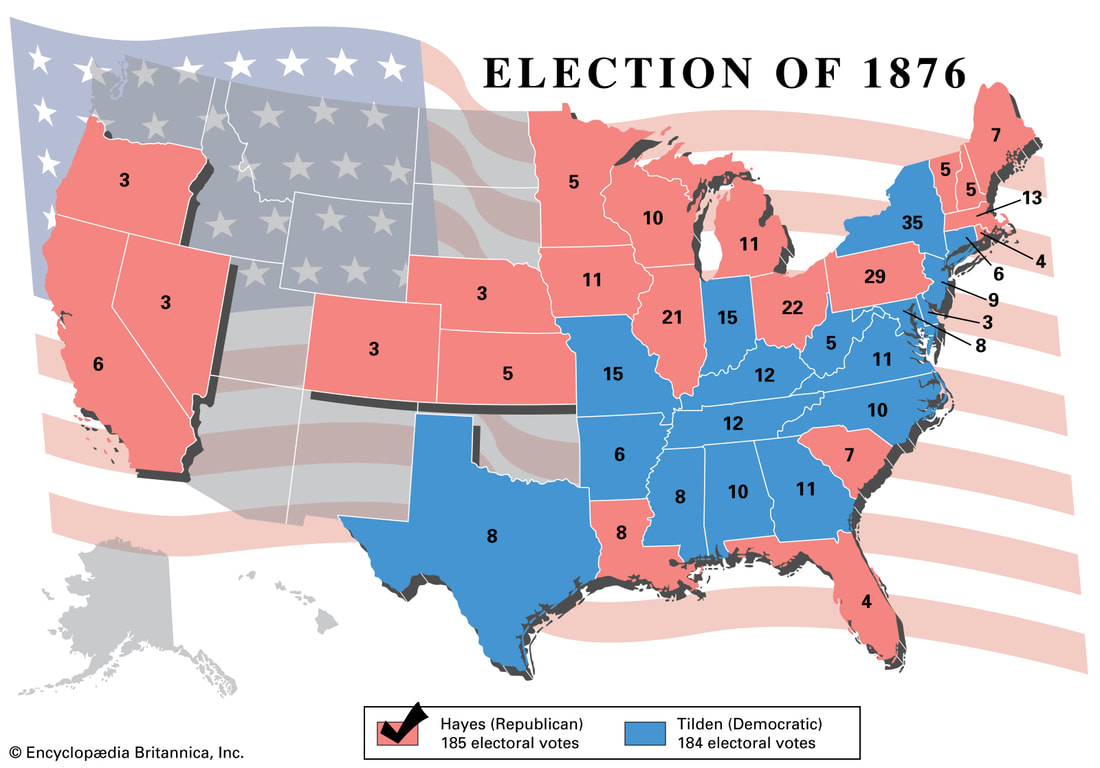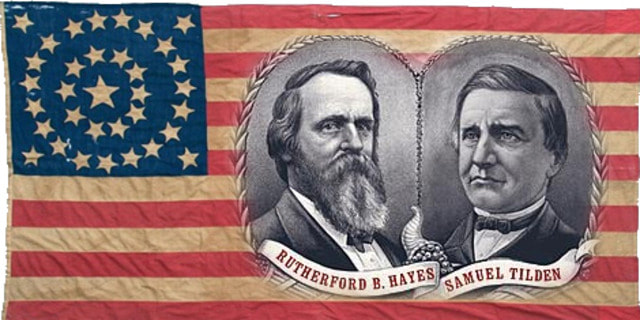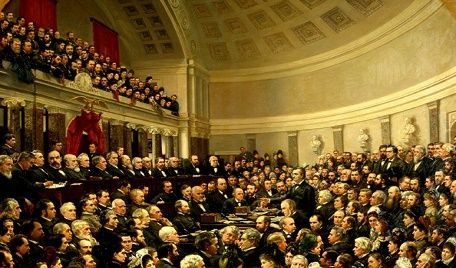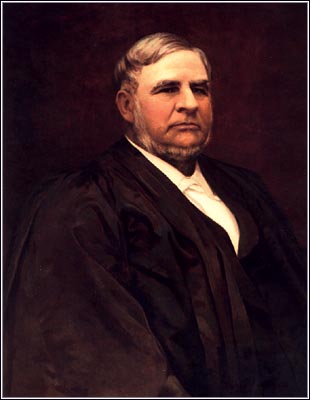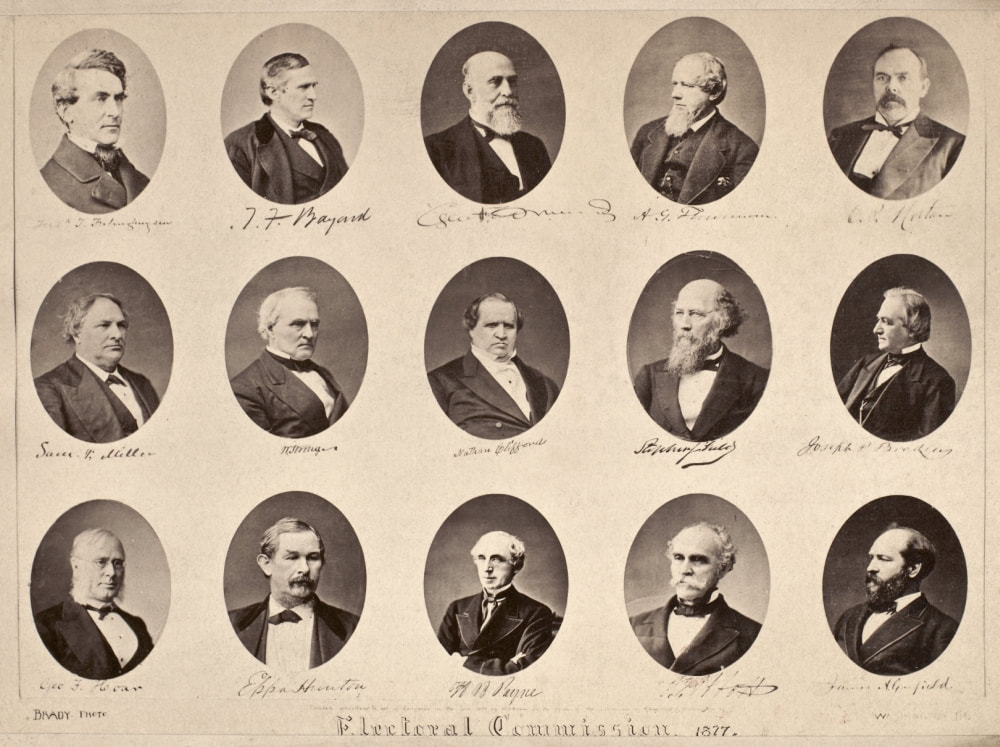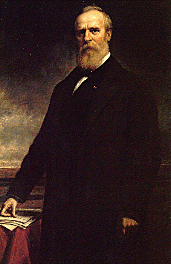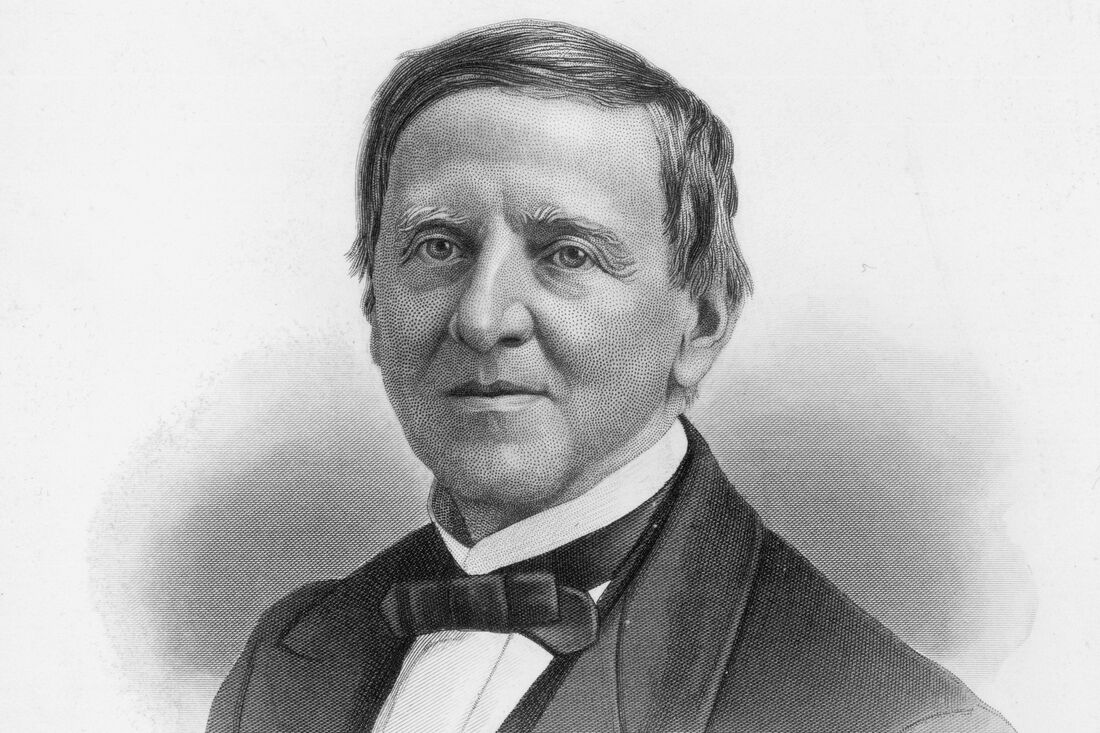The Disputed Election Results of 1876
|
The 1876 election, still the closest in history with185 to184 electoral votes, is remembered more for the aftermath of Election Day. It was the longest and most controversial election in American history. The outcome was not known until two days before the March 4 Inauguration Day.
When the polls closed November 7, 1876, Tilden had 184 electoral votes, one shy of winning, and had taken a substantial lead in the popular votes. Hayes had 165 electoral votes with 20 still not allotted to a candidate. The Electoral College results from Oregon and the three “unredeemed” Southern states controlled by Republican’s were in question. If Hayes could capture all twenty electoral votes, he would win the 185 required. |
|
Democrats and Republicans made allegations of fraud, witness intimidation and ballot tampering. The disputed results ended with both parties claiming victory thus sending in two sets of election results to Congress for tabulation. The mood was ominous; once again sectional issues seemed likely to erupt into violence.
|
In Oregon one of the three Republican electors was disqualified since he held a federal office and was therefore constitutionally ineligible to be an elector. The Democratic governor proceeded to replace him with a Democrat who voted for Tilden even though Hayes had clearly won the popular vote.In the only show of unity, both parties eventually agreed that the electoral vote should go to Hayes.
Tilden seemed to have a popular majority in South Carolina, Louisiana, and Florida, but Republicans still controlled the state voting polls. Republican leaders sent telegrams warning of potential voter fraud by Democrats and urged locals to hold their states for Hayes. If he received the 19 electoral votes he would win the presidency. National leaders of both parties went south to protect their interest, and rumors of vote buying were rampant on both sides. |
Electoral Commission 1877
The Constitution provided that “The President of the Senate shall, in the Presence of the Senate and House of Representatives, open all the Certificates, and the (electoral) Votes shall then be counted.” But whose vote would be counted, since both parties submitted Certifications with their candidate as the winner.
To resolve the issue, of who won the election, an irrevocably deadlocked Congress had to decide. The Democrat controlled House and the Republican controlled Senate agreed to appoint an Electoral Commission consisting of five House members, five Senators, and five Supreme Court Justices to determine who actually won the election. The Commission was composed of seven Republicans, seven Democrats and a mutually agreed upon independent, Supreme Court Justice David Davis. In the resolution creating the Commission, the only way to void their decision was a veto agreed upon by both chambers of Congress, which was not likely.
It was assumed the deciding vote would be Justice David Davis’. Had Davis actually served on the Commission it is likely that Tilden would have been given the state of Florida winning the election. However, prior to the Commission meeting, the Democratic members of the Illinois legislature elected Davis to fill an empty U.S. Senate seat assuming he would appreciate the gesture and vote for Tilden. This was a miscalculation on their part, because David accepted the position and immediately resigned from the Court.
His replacement, Justice Joseph P. Bradley, thought to be an objective non-partisan justice but a registered Republican, ended up voting party lines.
To resolve the issue, of who won the election, an irrevocably deadlocked Congress had to decide. The Democrat controlled House and the Republican controlled Senate agreed to appoint an Electoral Commission consisting of five House members, five Senators, and five Supreme Court Justices to determine who actually won the election. The Commission was composed of seven Republicans, seven Democrats and a mutually agreed upon independent, Supreme Court Justice David Davis. In the resolution creating the Commission, the only way to void their decision was a veto agreed upon by both chambers of Congress, which was not likely.
It was assumed the deciding vote would be Justice David Davis’. Had Davis actually served on the Commission it is likely that Tilden would have been given the state of Florida winning the election. However, prior to the Commission meeting, the Democratic members of the Illinois legislature elected Davis to fill an empty U.S. Senate seat assuming he would appreciate the gesture and vote for Tilden. This was a miscalculation on their part, because David accepted the position and immediately resigned from the Court.
His replacement, Justice Joseph P. Bradley, thought to be an objective non-partisan justice but a registered Republican, ended up voting party lines.
The Commission heard testimony of fraud by both parties, and it became clear that, while Democrats had outpolled Republicans in those states, they also were guilty of intimidating thousands of black and white Republicans from the polls. Dead people voted, some people voted more than 10 times in multiple places; election officials tampered with voting ballots, and whites paid for black votes. Democrats requested a full investigation at the state level into the accuracy of the results. Republicans wanted the commission to accept the votes as submitted.
The Commission voted, on party line eight to seven, to accept the returns from the Republican polling board giving the Presidency to Hayes. Democrats threatened a filibuster but ultimately put their support behind the Commission decision, thus averting possibly another Civil War once an unofficial agreement, the 1877 of Compromise, was reached. The Compromise agreed to withdraw Federal troops from the South, effectively ending Reconstruction, Southerners would be appointed to Cabinet positions, and internal improvements in the region would be supported by federal funds.
The Commission voted, on party line eight to seven, to accept the returns from the Republican polling board giving the Presidency to Hayes. Democrats threatened a filibuster but ultimately put their support behind the Commission decision, thus averting possibly another Civil War once an unofficial agreement, the 1877 of Compromise, was reached. The Compromise agreed to withdraw Federal troops from the South, effectively ending Reconstruction, Southerners would be appointed to Cabinet positions, and internal improvements in the region would be supported by federal funds.
President Rutherford Hayes
|
“His reputation for fairness and integrity made Hayes acceptable to many with whom he was not in agreement.”
|
On election night, Hayes went to bed believing that he had lost the election. Tilden had taken a substantial lead in the popular vote and seemed certain to win a majority of the electoral votes with 184 electoral votes already – the winner needed 185.
During his Presidency, Hayes endured many comments from his critics to the stolen election and Rutherfraud. In the end, Hayes integrity and good sense brought a desperately needed respite to a country that was plagued by corruption and hate. He ended the ugly era of Reconstruction and endeavored to unite the union not in name only by giving the south cabinet positions and supporting the rebuilding of their infrastructure. |
